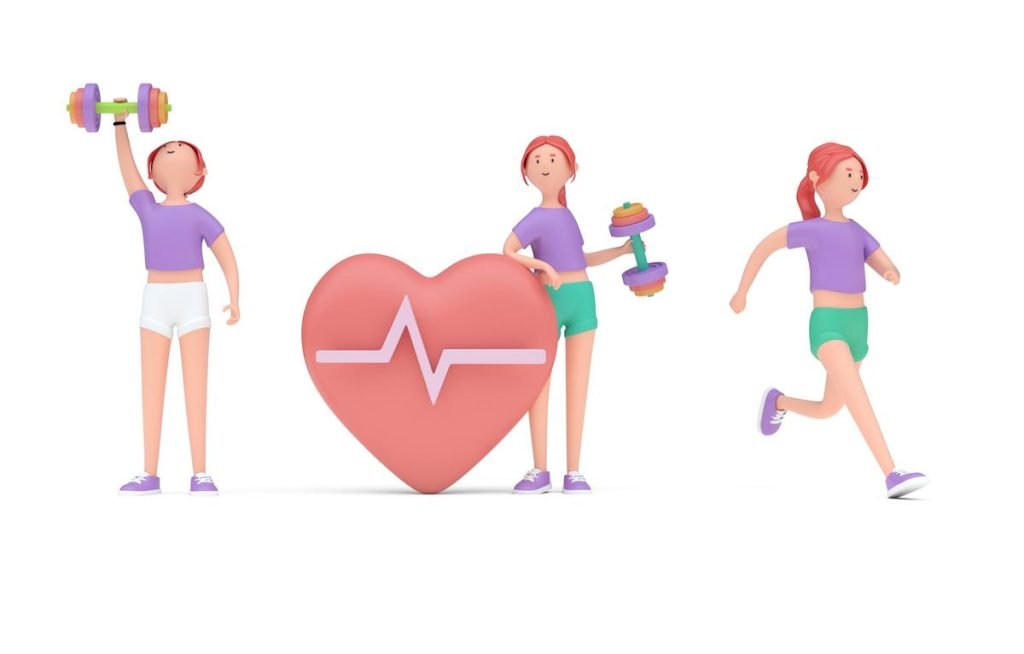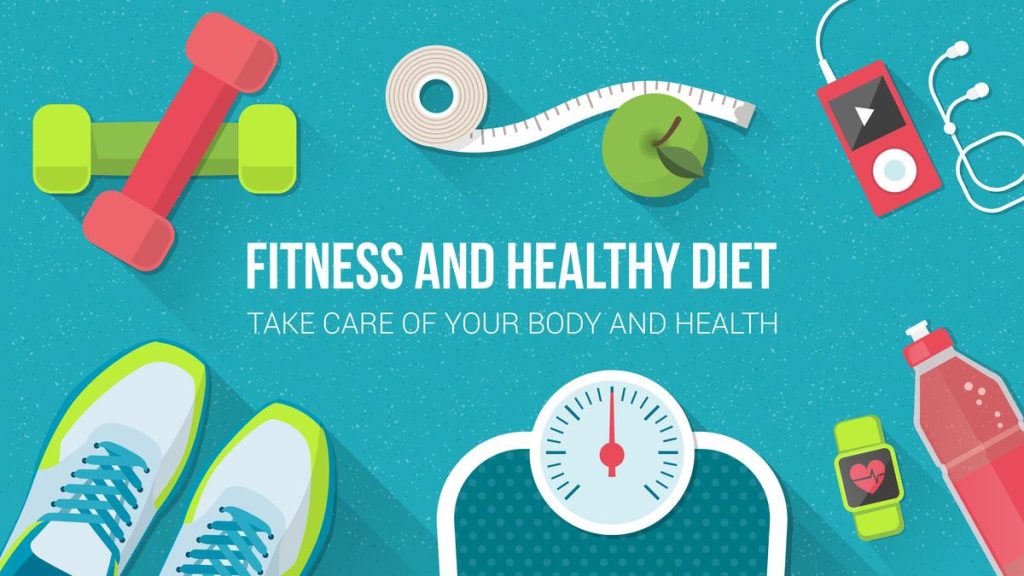Table of Contents
Introduction
The FITT principle is a fundamental idea in exercise physiology that is commonly employed in the design and development of successful personal fitness program. The acronym FITT stands for Frequency, Intensity, Time, and Type, and these four components serve as the foundation for developing effective and personalized workout treatments. In this detailed article, we will look at how the FITT principle applies to the development of a successful personal fitness program, looking into each component in depth and examining its significance in reaching fitness goals.
1. Frequency
The regularity with which you participate in exercise is known as frequency. It is an important part of the FITT principle since it determines the consistency of your workout regimen. The frequency of your workouts is determined by your fitness goals, current fitness level, and style of activity.
- Fitness Objectives: The frequency of your workouts should correspond to your fitness objectives. If you want to reduce weight, you may need to exercise more frequently than if you want to gain muscle.
- Current Fitness Level: To allow their bodies to adjust to exercise, beginners should begin with a lower frequency. As fitness increases, frequency can be gradually increased.
- Exercise Frequency: Different types of exercise necessitate different frequency. Cardiovascular exercises, such as jogging or cycling, can be performed more frequently than strength training, which necessitates proper recuperation between sessions.
To effectively implement the FITT principle, you must find a balance between frequency and recovery. Overtraining, which occurs when you exercise too regularly without giving your body time to recover, can result in injuries and burnout. Insufficient frequency, on the other hand, can result in delayed or even stagnant improvement.

2. Intensity
The level of effort expended during exercise is referred to as intensity. It is critical to the efficiency of a fitness program and can be tailored to individual fitness levels and goals.
- Individualization: The intensity of exercise should be matched to the fitness level of the individual. This ensures that workouts are demanding enough to drive progress but not too difficult.
- Heart Rate Zones: Monitoring heart rate is a typical approach for determining workout intensity. Different heart rate zones are used to achieve specific fitness goals, such as fat loss, cardiovascular endurance, or high-intensity interval training.
- Constant Overload: In order to gain continual improvement, you must gradually raise the intensity of your workouts. This can be accomplished by gradually increasing weights, speed, resistance, or duration.
- Rest and Recovery: Intensity includes rest intervals between workouts as well. Adequate rest allows the body to repair and adapt to the stress of exercise, reducing the risk of overuse problems.
The ideal intensity level guarantees that you are training at a suitable difficulty level, which is critical for safely and efficiently reaching fitness goals.
3. Time
In the FITT principle, time refers to the length of each exercise session as well as the overall length of a workout program.
- Exercise Session Duration: The duration of an exercise session is determined by the type of activity and its intensity. A high-intensity interval training (HIIT) session, for example, may just last 20-30 minutes, whereas a moderate-intensity cardio workout may last 45-60 minutes.
- Total Program Length: The amount of time required to reach your fitness goals should correspond to your lifestyle and preferences. Some people prefer shorter, more frequent workouts, while others prefer longer, less frequent workouts.
- Progression: The time part of the FITT principle, like the intensity aspect, comprises increasing overload. You can gradually raise the overall weekly exercise duration to keep your body challenged and improving.
Balancing the time factor is critical for avoiding burnout and keeping your workout program sustainable and fun.
4. Type
The mode or type of exercise you choose is referred to as type. Exercise can be classified as cardiovascular (aerobic), strength training (anaerobic), flexibility, and balancing exercises. The sort of exercise you choose should be based on your goals, interests, and personal needs.
- Progression: The time part of the FITT concept, like the intensity aspect, comprises increasing overload. You can gradually raise the overall weekly exercise duration to keep your body challenged and improving.
- Range: Including a range of exercise forms can help to avoid boredom, lower the risk of overuse problems, and provide a more comprehensive fitness benefit. Aerobic, strength, flexibility, and balancing exercises can all be included.
- Individual Factors: The form of exercise you select should take into account any physical limits, injuries, or health concerns you may have. A healthcare practitioner or fitness specialist can assist you in selecting safe and appropriate exercises.
In conclusion, the FITT principle is a versatile tool for customizing a personal fitness program to your unique needs and goals. You may develop an effective, safe, and sustainable program by carefully examining and altering each component—Frequency, Intensity, Time, and Type.
Real-World Applications of the FITT Principle
Now that we’ve gone over the FITT principle’s components in depth, let’s apply it to three different real-life circumstances to demonstrate its versatility and usefulness in designing successful personal fitness programs.
Scenario 1: Loss of Weight
- Frequency: A high frequency of exercise sessions is usually required to facilitate weight loss. Aim for at least five days of moderate to high-intensity cardiovascular exercise per week.
- Intensity: Your intensity should be high enough to raise your heart rate and burn calories. Heart rate monitors can help you stay within your desired heart rate zone, which is typically 60-80% of your maximal heart rate.
- Time: To accomplish optimal calorie expenditure, cardio sessions should last 30 to 60 minutes.
- Type: To burn calories and lose weight, focus on aerobic exercises such as brisk walking, jogging, cycling, or swimming. To keep the programme interesting, incorporate variation by combining different types of cardiac activities.
Scenario 2: Muscle Gain
- Frequency: A lower frequency is often recommended for muscle building to allow for appropriate recuperation. Strength training two to three days per week is sufficient, with at least 48 hours of rest between sessions targeting the same muscle groups.
- Intensity: The intensity should consist of lifting weights that are difficult but manageable. Aim for 8-12 repeat sets with proper form.
- Time: Strength training sessions can range in length, but 45-60 minutes is a good starting point.
- Type: To target essential muscular groups, focus on resistance training movements such as squats, deadlifts, bench presses, and pull-ups. By progressively increasing the weight you lift, you can incorporate progressive overload.
Scenario 3: Overall Health and Fitness
- Frequency: Aim for a balanced approach to overall fitness and health maintenance. Include a variety of cardio, strength training, flexibility, and balancing exercises. A reasonable amount of exercise per week is three to five days per week.
- Intensity: Alter the level of the workouts to incorporate both moderate and high-intensity activities. On certain days, you might undertake high-intensity interval training (HIIT) and on others, low-impact yoga.
- Time: The length of each session varies according on the type of exercise. Cardio workouts can last anywhere from 20 to 60 minutes, while strength training sessions can last anywhere from 30-45 minutes.
- Type: Include a variety of workouts to target various aspects of fitness. Cardio activities such as jogging or cycling, strength training with free weights or resistance bands, flexibility exercises such as yoga or stretching, and balancing exercises such as Pilates or stability ball workouts can all be included.
The FITT principle acts as a guiding framework in each of these circumstances to personalize the exercise program to unique goals and needs. Individuals can construct exercise regimens that are both successful and pleasant by altering the components of Frequency, Intensity, Time, and Type.
Conclusion

Finally, the FITT principle is an essential component of developing a successful personal fitness program. Individuals can design individualized fitness routines that coincide with their goals, fitness levels, and tastes by learning and applying the principles of Frequency, Intensity, Time, and Type. The FITT principle provides an adaptable framework for building programs that are safe, effective, and sustainable, regardless of whether the goal is weight loss, muscle gain, or overall health and fitness. It also allows for flexibility and modification as people grow in their fitness journeys or face changes in their situations. Finally, the FITT principle encourages people to take charge of their fitness and live healthier, happier lives through regular physical activity.